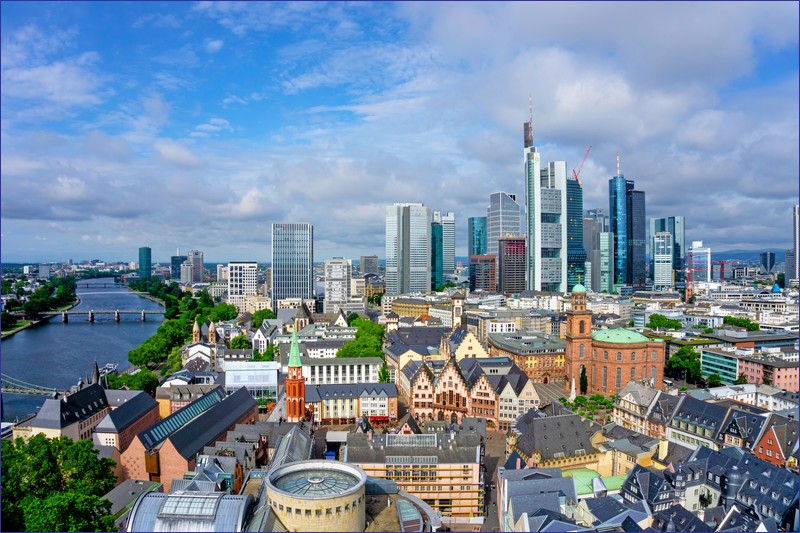Frankfurt am Main is one of Germany’s largest cities and a major railway junction. Located in the state of Hesse, it is home to the European Central Bank, the German Federal Bank, and the Frankfurt Stock Exchange. The city combines a striking skyline of modern skyscrapers with a historic old town. There are many possibilities to plan day trips from Frankfurt am Main by train – regional, long-distance and international trains to many interesting places in Germany, Switzerland, Belgium and France.
I’ve listed only the most important destinations that can be reached by regional trains from Frankfurt am Main within two hours (R, RE and regional operators). In some cases, a transfer is necessary. In the future, I plan to expand this article with other interesting places.
Direction Marburg
Friedberg – a town with over 750 years of history, located about 30 kilometers from Frankfurt am Main. The town’s most famous landmark is one of the largest medieval defensive castles in Germany. The castle houses, among other things, a school and the tax office. In the center, you can see the Gothic Marienkirche church and the picturesque alleys of the old town, the old synagogue, a mikveh, remnants of city walls with the so-called Red Tower, the Neo-Baroque St. James Church, and the town hall. Elvis Presley completed his mandatory military service in this town. Surrounding the city are parks, walking areas, and cycling trails.
Butzbach (optional) – a small town perfect for an hour and a half of sightseeing. It features a very beautiful main square surrounded by half-timbered houses, a town hall built in 1560, and a fountain – considered by some to be the most beautiful market square in Hesse. Streets leading off the main square have houses from the 17th and 18th centuries. Other interesting landmarks include Butzbach Castle (Butzbach Schloss), used for a long time as barracks and now housing public administration, the Gothic St. Mark’s Church on Kirchplatz, and Michael’s Chapel, which serves as an ossuary.
Bad Nauheim (optional) – a spa town with the beautiful early 20th-century Sprudelhof spa complex. Sprudelhof is one of the symbols of German Art Nouveau. In the town, you can find sculptures of Elvis Presley and a noteworthy library building.
Giessen (optional) – an architecturally average city that received city rights in 1248. It hosts several interesting museums – the Giessen Museum in the Old Castle features exhibits on city history and an art collection. The Liebig Museum is dedicated to Justus von Liebig, one of the most prominent 19th-century chemists. Families with children should visit the interactive Mathematikum math center and the botanical garden founded in 1609 – the oldest in Germany. A quirky highlight is the small Watering Can Museum (Gießkannenmuseum). The New Palace (1533–1539) survived the war undamaged; only the tower of the St. Pancras Church (1500) remains – visitors can climb its 178 steps for a city view.
Marburg – a historic town worth visiting. In 1527, Philip the Magnanimous founded the first Protestant university in the Holy Roman Empire here. The Landgrave Castle dominates the city, with notable features including the Knights’ Hall, the distinctive square tower, and a Gothic chapel. A significant landmark is St. Elizabeth’s Church (1235–1283), the second purely Gothic religious building in Germany, featuring valuable interior fittings such as 16th-century altars. Marburg boasts fascinating museums, including the University Museum, Photography Museum, Museum of Art and Cultural History, the German Police Car Museum, and an art gallery (Kunstverein). Other landmarks include the 19th-century Spiegelslustturm lookout tower, the Gothic Church of the Virgin Mary, the town hall, and the Einhausen mansion.
Day trips from Frankfurt am Main by train – Direction Fulda
Hanau (optional) – formerly a fortified town, known as the birthplace of the Brothers Grimm. Their lives and work are commemorated at the Brothers Grimm Museum, housed in a modern building opened in 2013. The Old Town was mostly destroyed in WWII, but some buildings were reconstructed. Highlights include the Goldsmiths’ House (former Old Town Hall), the scenic Philippsruhe Castle in the park by the Main River, and the spa district of Wilhelmsbad.
Gelnhausen – founded in 1170 by Frederick Barbarossa. Most landmarks are near the small main square, including the imposing Protestant Marienkirche, the 13th-century St. Peter’s Church, the town hall, and the “Witches’ Tower” (Hexenturm), used as a prison during witch trials. On the outskirts lies the Palatium (Kaiserpfalz), one of the largest preserved imperial castles in Germany. Many half-timbered houses have also been preserved.
Steinau an der Strasse (optional) – a small town on the Kinzig River. It features a well-preserved Renaissance castle (Schloss Steinau) with a 40-meter tower. About 5 km from the center are the ruins of Stackelberg Castle.
Fulda – a city that developed around an abbey founded in 744. Its showpieces are two landmarks facing each other: the beautiful Baroque cathedral (1704–1712) with a cathedral museum, and the nearby City Palace. The cathedral was built on the site of a former abbey church and modeled after St. Peter’s Basilica in Rome. The City Palace (Stadtschloss Fulda), now largely housing the City Office, offers the Mirror Hall, Princely Hall, and a porcelain collection. Nearby are the Paulustor city gate, the Church of St. Michael, and an 18th-century orangery with a restaurant. A walk from the train station to the cathedral passes the Old Town Hall and the Vonderau Museum, which has diverse historical exhibits. On a hill overlooking the city, you can stay overnight at a monastery with panoramic views. Families should visit the German Firefighting Museum (Deutsches Feuerwehr-Museum) on the outskirts.
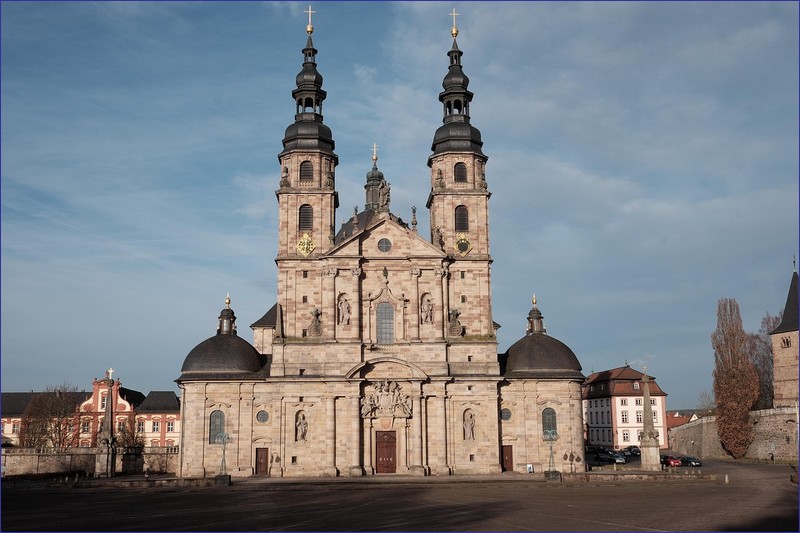
Direction Erbach im Odenwald
Darmstadt – an academic hub and headquarters of the European Space Agency (ESA). Its biggest attraction is the Hessian State Museum (Hessisches Landesmuseum), which offers a wide range of exhibits from zoology and geology to art. Nearby are the archive building of the Polytechnic and the Ducal Palace, part of which serves as a museum and art gallery. The 39-meter White Tower (Weiße Turm) is open irregularly. The Waldspirale, an architecturally unique building, is worth seeing. The Mathildenhöhe hill, once home to an artists’ colony, features the distinctive Wedding Tower. The Rosenhöhe Garden on the city’s edge, founded in the 19th century, is also popular.
Erbach im Odenwald – a small town with a beautiful center of half-timbered houses. You can tour a private palace where the owner still resides, with guided visits showcasing a diverse range of exhibits: knightly armor, weapons, hunting trophies, coins, sculptures, paintings, and ivory.
Direction Koblenz
A large section of the railway line runs along the Rhine River and is among the most scenic in Europe.
Wiesbaden – the capital of Hesse and a former spa town. Its thermal waters were known even in Roman times. The spa flourished in the 19th century, featuring Classicist and Historicist architecture. Highlights include the grand Kurhaus with a vast portico and a casino hall where Dostoevsky and Wagner once gambled. The oldest surviving building is the Old Town Hall from 1610. Other landmarks include the Hessian State Theatre, the Palace (1835–1841, now the Hessian Parliament), and the fairy-tale Biebrich Castle on the outskirts.
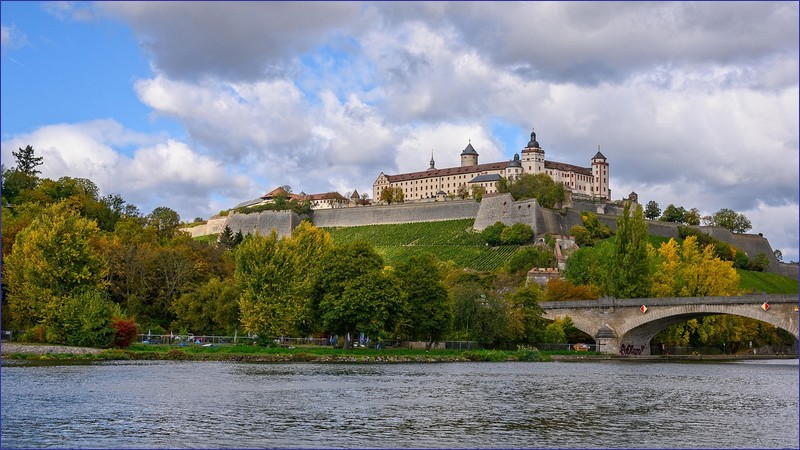
Eltville am Rhein – the largest town in the Rheingau region, known for wine, champagne, and rose cultivation. Its charming old town features the Episcopal Castle (tower open to tourists in season). Seasonal Rhine cruises are available, and the Rosarium is also worth a visit. Nearby is the Eberbach Monastery, and other wine-producing towns like Hattenheim or Oestrich-Winkel are easily accessible by regional trains heading to Koblenz.
Lorch am Rhein (optional) – a small riverside town with beautiful architecture. Sights include the 14th-century St. Martin’s Church, the Robert Struppmann Museum on local history, and the ruins of Nollig Castle overlooking the town.
Koblenz – a key river port at the confluence of the Moselle and Rhine rivers. From the Middle Ages to the 19th century, it was the residence of the Prince-Bishops of Trier. Though more industrial and less architecturally rich than other historic cities, its main attraction is the Deutsches Eck (German Corner) – a triangular headland visited by tourists from around the world. The former Teutonic Knights’ residence now houses the Ludwig Museum of Art. Nearby is the Basilica of St. Castor, part of the Deutschherrenhaus complex. Close to the Rhine bridge stands the majestic Electoral Palace. Other noteworthy sites include the Church of Our Lady (Liebfrauenkirche), the town hall, Jesuit Church, Historiensäule column, and the massive Ehrenbreitstein Fortress, a part of Prussian-era fortifications, offering panoramic views of the city. Museums worth visiting include the Deutsche Bahn Railway Museum, the Wehrtechnische Studiensammlung (military technology collection), the Middle Rhine Museum, and the Rhine Museum.
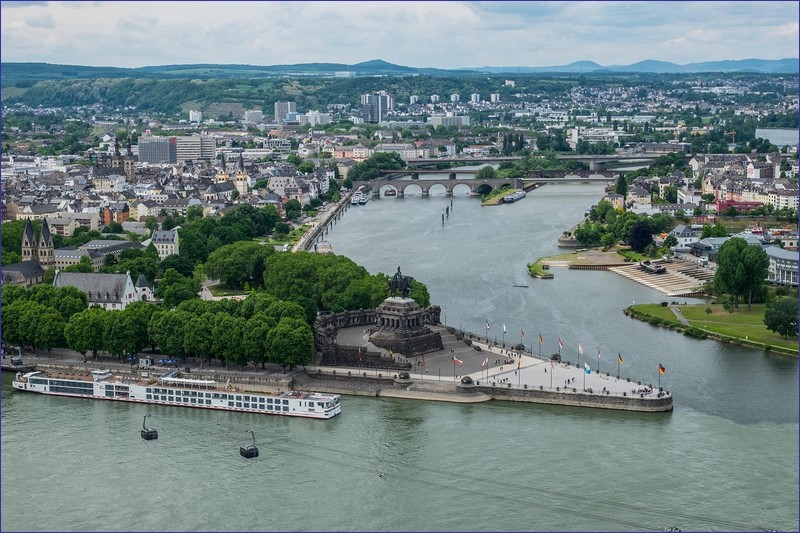
Direction Aschaffenburg
Aschaffenburg – a city in Lower Franconia, picturesquely located on the right bank of the Rhine. It was once the residence of the Archbishops of Mainz. Completely destroyed in WWII and rebuilt afterward. Its landmark is Johannisburg Castle, home to valuable European artworks and a library with unique medieval codices. Next to the castle is Pompejanum, a building modeled on a Roman villa. With about 70,000 residents, the city also features a Natural History Museum, a Jewish History Museum, and the well-maintained Schöntal Park.
Lohr am Main (optional) – a small town with a charming center full of half-timbered houses, narrow alleys, and a historic fishing district. The Kurmainzer Castle houses a museum. Ideal for a peaceful 1.5-hour stroll.
Würzburg – a mid-sized city on both banks of the Main River. Over 80% of the city was destroyed in WWII but many landmarks were rebuilt. A major center of Lower Franconia, known for its wine. Its best-known landmark is the Würzburg Residence, a grand Baroque palace (1719–1744) with lavish interiors. Another key site is the Marienberg Fortress (Festung Marienberg) across the river, now housing the Museum of Lower Franconia. Sacred landmarks include the Romanesque St. Kilian’s Cathedral (1045–1188) and the Neumünster Collegiate Church. The 180-meter Old Main Bridge (Alte Mainbrücke) with saintly statues is particularly notable.
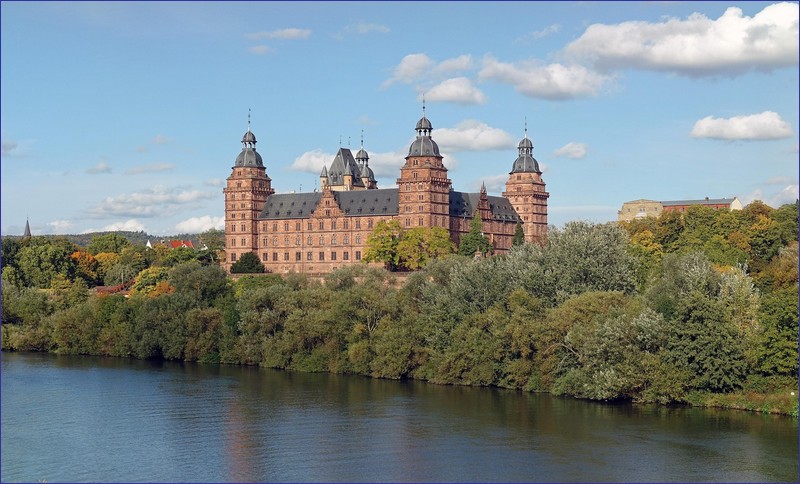
Direction: Dillenburg
Part of the train route from Frankfurt am Main to Dillenburg overlaps with the regional train route from Frankfurt am Main to Marburg. Only after Giessen do the trains switch to a different railway line. Sometimes a transfer is required at Giessen station.
Wetzlar – a charming town located on the Lahn River. It holds a place in literary history, as Johann Wolfgang von Goethe spent three months here doing an internship at the local court. His stay inspired him to write The Sorrows of Young Werther. An interesting historical monument is the collegiate church (referred to as “Wetzlarer Dom”), whose construction began in 897 but was never completed. Noteworthy is the seven-arched Old Bridge, which connects the former suburb of Bicken—home to a Rococo hospital church—with Wetzlar’s old town. Towering over Wetzlar are the ruins of the Kalsmunt fortress, dating back to the 12th century.
Herborn – a small town considered one of the most beautiful in Hesse. The architecture mainly consists of historic half-timbered houses. Other notable landmarks include the Protestant church built between 1598 and 1609, the town hall, a former secondary school building now serving as a Regional Museum, and a castle that houses a theological seminary. The town has three main squares: Buttermarkt, Kornmarkt, and Holzmarkt. On the outskirts, there are two scenic viewpoints offering vistas of Herborn.
Dillenburg – a town slightly larger than Herborn, and reportedly even more picturesque in terms of architecture. The restored town center features numerous half-timbered houses, cobbled side streets, and a pleasant atmosphere. Above the town is a scenic viewpoint near the small Bismarck Temple, which can be reached by a roughly 15-minute uphill walk through the forest from the town center. A panoramic view of the town is also available from the Wilhelmsturm tower, built between 1872 and 1875. It also takes about 15 minutes on foot uphill from the center. Next to the tower, visitors can explore the Orange-Nassau Museum and the casemates. Several attractive hiking trails are marked in the surrounding area.
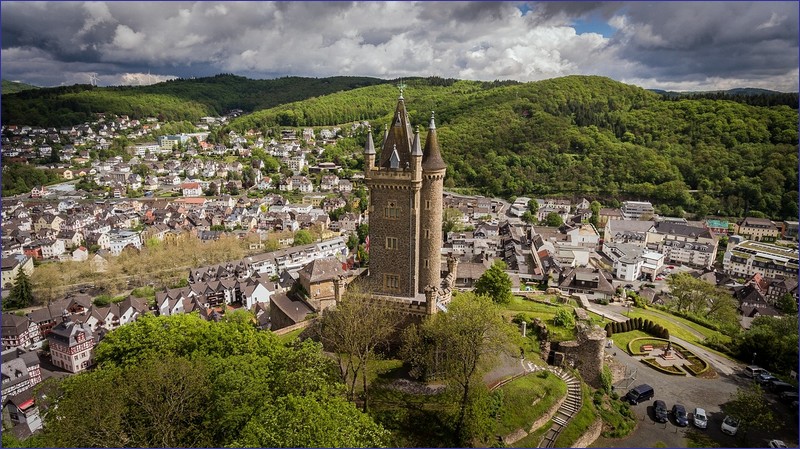
Direction: Limburg an der Lahn
While preparing this article, a transfer at Giessen station was necessary.
Limburg an der Lahn (optional) – a town with about 36,000 inhabitants. Since 1821, it has been the seat of a newly established diocese. The most important monument is St. George’s Cathedral, built between 1190 and 1250. To the south of the cathedral stands the castle, now home to the Diocesan Museum. Many half-timbered houses have been preserved, along with a 14th-century bridge.
Related articles:
Train travel in Germany – a comprehensive guide
